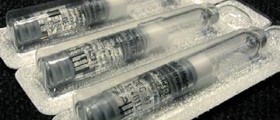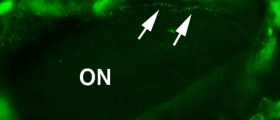FSH and LH - General Info
FSH (follicle-stimulating hormone) and LH (luteinizing hormone) are two vital hormones for proper process of fertilization. They can be normal, reduced or increased and apart from being tested in case of infertility they are also used in diagnosing pituitary disorders. Both of these hormones are produced by the pituitary gland. To measure their level the patients undergo simple blood test. They can be also measured in urine and saliva samples. These two hormones play crucial role in many processes such as the growth and development, pubertal maturation and reproductive processes in the body. In women these hormones are rather important for ovulation while in men LH induces proper production of testosterone.
In childhood the level of both hormones, FSH and LH are low. On the other hand in menopausal women the level of these hormones is quite high. During reproductive years optimal level of LH ranges from 1 to 20 IU/L. Increased levels of LH may occur and this lasts no longer than 48 hours. Optimal range of FSH is between 3 mIU/ml and 10 mIU/ml. These levels are required for proper development of sex organs and adequate production of reproductive cells. In case that FSH is increased for a longer period of time, this is considered abnormal.
Testing of FSH and LH is required in case doctor is trying to find out the underlying cause of infertility, in women suffering from irregular and heavy menstrual periods, in people who are assumed to suffer from pituitary or hypothalamic disorders and in people who are suffering from certain ovarian or testicle diseases. Furthermore, FSH and LH are tested if the doctor suspects that a child is suffering from delayed or premature sexual maturation.
Abnormalities in FSH and LH Levels
It is normal to have LH greater than 20 mIU/ml on the surge day. FSH is supposed to be measured on the third day of the menstrual cycle. At that time its normal levels are between 2 and 20 mIU/ml and normal levels of LH are considered less than 7 mIU/ml.
In women suffering from polycystic ovarian syndrome or ovarian cysts these numbers are disturbed and the level of LH is higher than the level of FSH. High levels of both hormones point to the primary ovarian failure. On the other hand, low FSH and low LH levels point to the secondary ovarian failure caused by a pituitary or hypothalamic disorders. And finally, low FSH levels are risk factor for ovarian cancer.
- Promoting dose-associated increase in the secretion of estradiol and androstenedione by r-hFSH-induced follicles.
- Enhancing ovarian sensitivity to FSH as observed in the number of patients who developed follicles following FSH administration.
- Increasing the successful luteinization of follicles on exposure to hCG.
In pregnancy FSH level does not change significantly while in menopause it is normal for FSH to increase substantially. The level of FSH is rather high comparing to the level of LH even though the second hormone is also increased during this period of a woman's life. In menopausal women the level of FSH is around 50 mIU/ml.


















Your thoughts on this
Loading...